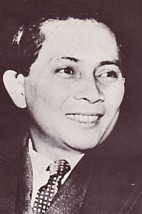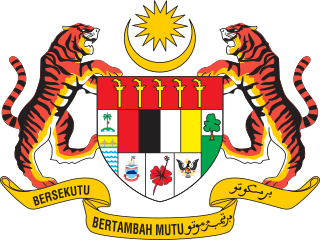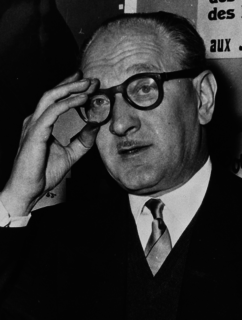
The prime minister of Australia is the head of government of Australia. The prime minister is the leader of the executive branch of the federal government of Australia and is also accountable to federal parliament under the principles of responsible government. The incumbent prime minister is Scott Morrison, who took office in August 2018 as leader of the Liberal Party.

The prime minister of the United Kingdom is the head of government in the United Kingdom. The prime minister advises the sovereign on the exercise of much of the royal prerogative, chairs the Cabinet and selects its ministers. As modern prime ministers hold office by virtue of their ability to command the confidence of the House of Commons, they sit as a member of Parliament.

The Cabinet of the United Kingdom is the senior decision making body of the Government of the United Kingdom. A committee of the Privy Council, it is chaired by the Prime Minister and its members include Secretaries of State and other senior ministers.

The prime minister is the head of government in Sweden. Before the creation of the office of a prime minister in 1876, Sweden did not have a head of government separate from its head of state, namely the king, in whom the executive authority was vested. Louis Gerhard De Geer, the architect behind the new bicameral Riksdag of 1866 that replaced the centuries-old Riksdag of the Estates, became the first officeholder in 1876.

The Ministry for Europe and Foreign Affairs is the ministry of the Government of France that handles France's foreign relations. Since 1855, its headquarters have been located at 37 Quai d'Orsay, close to the National Assembly. The term Quai d'Orsay is often used as a metonym for the ministry. Its cabinet minister, the Minister for Europe and Foreign Affairs is responsible for the foreign relations of France. The current officeholder, Jean-Yves Le Drian, was appointed in 2017.

The Cabinet Office is a department of the Government of the United Kingdom responsible for supporting the prime minister and Cabinet of the United Kingdom. It is composed of various units that support Cabinet committees and which co-ordinate the delivery of government objectives via other departments. It currently has just under 8,000 staff, most of whom are civil servants, some of whom work in Whitehall. Staff working in the Prime Minister's Office are part of the Cabinet Office.

The prime minister of Malaysia is the head of government of Malaysia. The prime minister directs the executive branch of the federal government. The Yang di-Pertuan Agong appoints as the prime minister a member of Parliament (MP) who, in his opinion, is most likely to command the confidence of a majority of MPs; this person is usually the leader of the party winning the most seats in a general election.

The Government of Ireland is the cabinet that exercises executive authority in Ireland.
Douglas Scott Harkness, was a Canadian politician, teacher, farmer and former lieutenant colonel in the Royal Canadian Artillery.
Gordon Minto Churchill, was a Canadian politician. He served in the Legislative Assembly of Manitoba from 1946 to 1949 as an independent representative, and in the House of Commons of Canada from 1951 to 1968 as a Progressive Conservative. He was a federal cabinet minister in the government of John Diefenbaker.

The position of Prime Minister of Indonesia existed from 1945 until 1966. During this period, the prime minister was in charge of the Cabinet of Indonesia, one of the three branches of government along with the People's Representative Council and the president. Following his 1959 decree, President Sukarno assumed the role and powers of prime minister until his resignation in 1966.

Sis Ram Ola was a member of the 15th Lok Sabha of India. He represented the Jhunjhunu constituency of Rajasthan and was a member of the Indian National Congress.

The Cabinet of Malaysia is the executive branch of the Government of Malaysia. Led by the Prime Minister, the cabinet is a council of ministers who are accountable collectively to the Parliament. According to the Article 43 of the Federal Constitution, members of the Cabinet can only be selected from members of either houses of Parliament. Formally, the Yang di-Pertuan Agong appoints all Ministers on the advice of the Prime Minister. The constitution is amended by repealing the Clause (8) of Article 43, enabling a person who is a member of State Legislative Assembly to continue to be one even when he or she is appointed as a minister or deputy minister in the cabinet. Ministers other than the Prime Minister shall hold office during the pleasure of the Yang di-Pertuan Agong, unless the appointment of any Minister shall have been revoked by the Yang di-Pertuan Agong on the advice of the Prime Minister but any Minister may resign his office. In practice, the Yang di-Pertuan Agong is obliged to follow the advice of the Prime Minister on the appointment and dismissal of ministers.

Guided Democracy was the political system in place in Indonesia from 1959 until the New Order began in 1966. It was the brainchild of President Sukarno, and was an attempt to bring about political stability. Sukarno believed that the parliamentarian system implemented during the Liberal Democracy period was ineffective due to Indonesia's divisive political situation at that time. Instead, he sought a system based on the traditional village system of discussion and consensus, which occurred under the guidance of village elders. With the introduction of this system, Indonesia returned to the presidential system and Sukarno became the head of government again.

Jellejetta "Jetta" Klijnsma is a Dutch politician serving as the King's Commissioner of Drenthe since 2017. She is a member of the Labour Party (PvdA).
Rainer von Fieandt's cabinet was the 42nd government of Republic of Finland. Cabinet's time period was from November 29, 1957 to April 26, 1958. It was a caretaker government. Cabinet fell by interpellation of the opposition and it is up to date (2021) the last Finnish government to do so.
The National Liberal Party, known until 1948 as the Liberal National Party, was a liberal political party in the United Kingdom from 1931 to 1968. It broke away from the Liberal Party, and later co-operated and merged with the Conservative Party.

Guy Alcide Mollet was a French politician. He led the socialist French Section of the Workers' International (SFIO) from 1946 to 1969 and was the French Prime Minister from 1956 to 1957.

The 22nd government of Turkey was a government in the history of Turkey. It is also called the fourth Menderes government.

The 23rd government of Turkey was a government in the history of Turkey. It is also called the fifth Menderes government.














